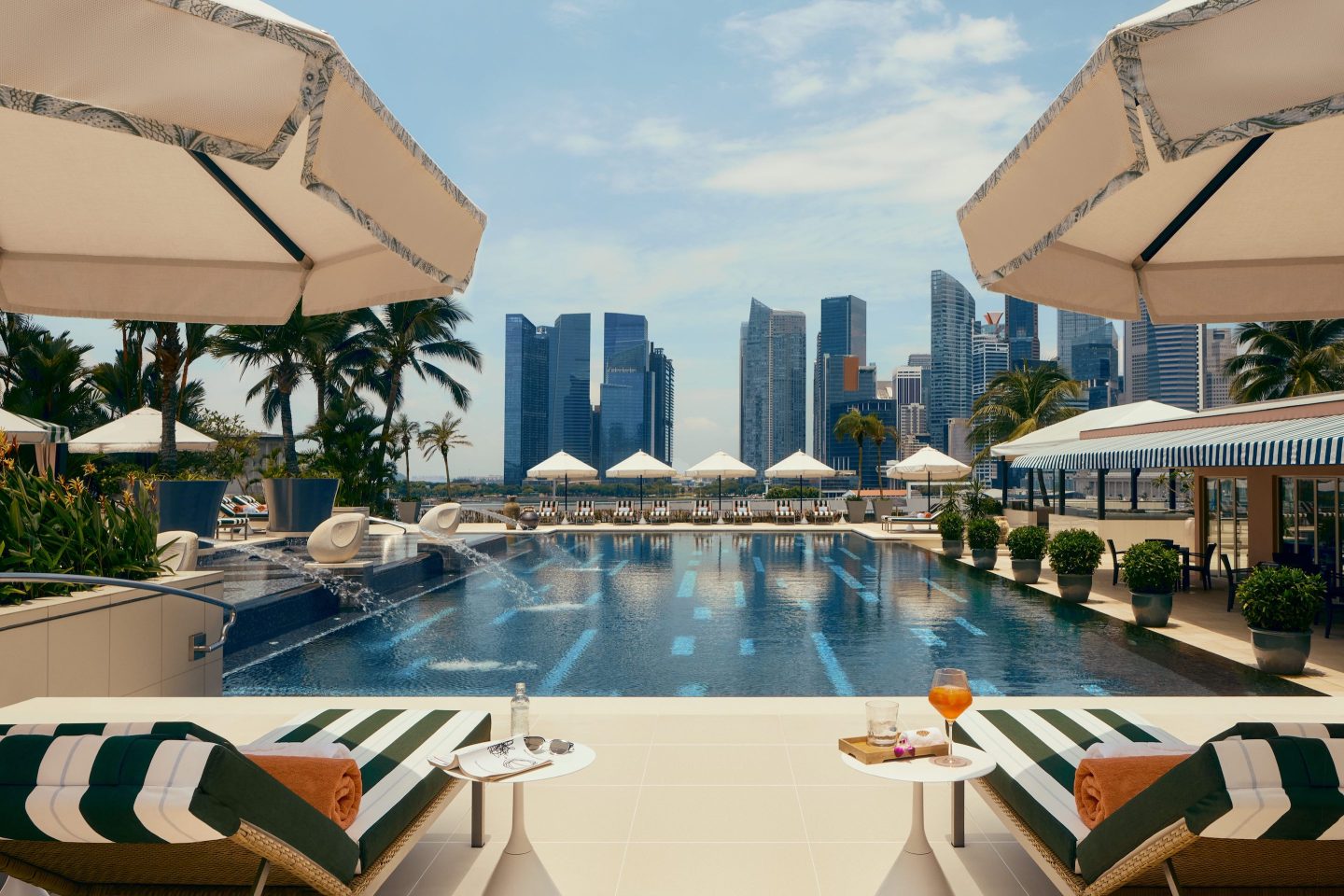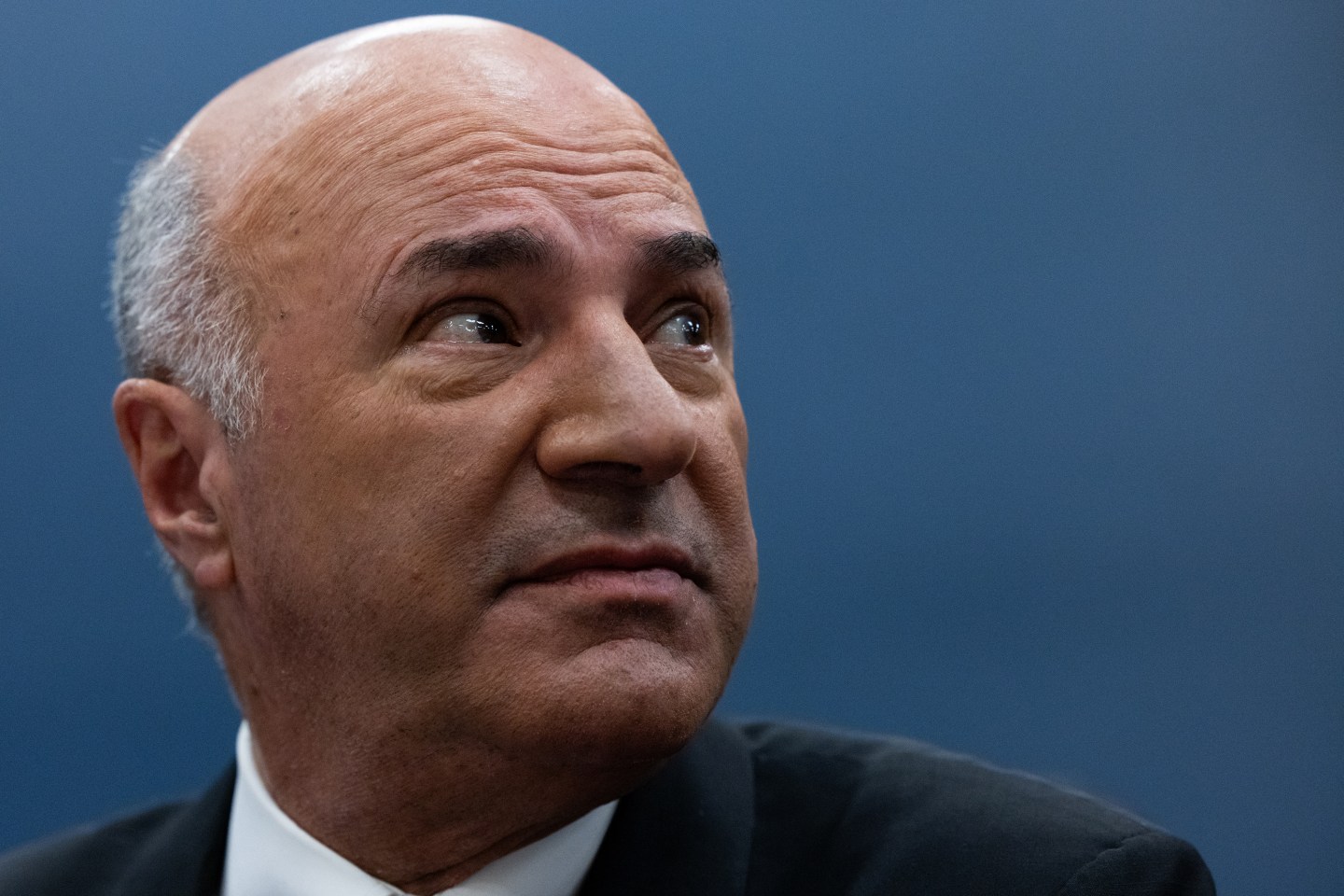Promotional consideration was provided for some of the goods or services mentioned in this article. This was not disclosed when the article was published, which was not in accordance with our editorial standards.
As one of the business capitals of the world as well as a major fixture on the Formula One circuit, Singapore is a prime destination for those traveling for business and pleasure. And over the last few years, many of the city’s top hotels have been undergoing renovations to meet greater demand from high-spending tourists.
Among them is the Mandarin Oriental Singapore, which recently reopened after being completely closed for a total renovation from top to bottom.

Much like Singapore itself, the ambiance at the Mandarin Oriental Singapore is a blend of old and new, notable immediately upon entry. The hotel is one of only a handful of historic properties in the area that still has an atrium-style entry, as do the nearby Park Royal and Pan Pacific hotels.
As the hotel managers note, Singapore’s real estate is very limited, so newer developments literally don’t have the room to build out their public spaces that way. Outside the hotel, there are other major changes in the landscape as well that have also deeply influenced the remodel at the Mandarin Oriental Singapore. When the building was first constructed in 1985, there was no Marina Bay, which was later developed on reclaimed land.

Thus, the original five-star views at the hotel all offered city views. But by the time the renovation came around a few years ago, it was only logical to move the prime suites over to the other side of the building with direct views over Marina Bay (not to mention some of the most prime views in the city of the racetrack during Formula One each September).

The structure was originally built by John C. Portman Jr., American neofuturistic architect and real estate developer who also designed several other hotel properties in Singapore as well as across Asia and the United States. The principal designer for the renovation was Jeffery Wilkes, a Canadian interior designer whose internationally-acclaimed boutique firm, Designwilkes, is based in Kuala Lumpur, Malaysia. Wilkes already has a working relationship with the hotel group, having worked on Mandarin Oriental properties in Dubai, Bangkok, and Hong Kong.

The primary inspiration for the new design throughout the hotel, from the lobby decor to the finest details in the guest rooms is the Peranakan subculture, a multiracial community dating back several centuries when Singapore emerged as the major port city linking China and India on shipping routes. The Peranakans are generally of mixed Chinese and Malay/Indonesian heritage, and their culture, cuisine, language, and designs are even more diverse with many influences from India and Southeast Asia.
A floral mural by artists Keng Wai Lee and Marco Araldo provides a lively backdrop to the reception area of the newly transformed lobby. The synergy between the artists’ styles is based on the contrast between the techniques used: Araldo uses ink pen and gold, creating geometrical patterns and graphic illustrations, while Lee’s technique frequents the use of acrylic, focusing on impressions of subjects taken from nature: flowers, picturesque scenery, ocean habitats, and birds. The piece pays homage to the Nyonya and Baba heritages with its fresh use of color. The commissioned art was handpicked by Wilkes for its gorgeously rich and colorful painting, serving as the perfect depiction of the tropical flowers and plants in Singapore.

Thus, Wilkes and his team focused on highlighting signature Singaporean elements and architecture—such as black and white houses and Angsana trees—with artwork, wallpaper, furniture, and other touches all sourced from the region. Guests might also notice the abundance of fresh flowers throughout the hotel, and that is by design. Singapore is also known as the garden city, with the orchid as the city and island nation’s signature flower. At least 90% of the flowers throughout the hotel, including in guest rooms, are fresh and replaced frequently.

Being an international capital for finance, shipping, fashion, and much more, Singapore receives a fair number of business travelers. One of the biggest overhauls during the hotel renovation was for the business center, which was once quite staid but now looks like a cozy but still very luxurious penthouse suite all on its own.
Named Haus 65 (as Singapore received its independence from Malaysia in 1965), the social lounge space was co-curated with the nearby private membership club Mandala Club. Guests who indulge in this membership during their stay are treated to a number of exceptional amenities, including complimentary access to a chauffeur driven car and access to wellness classes. Guests can also enjoy daily champagne breakfast, afternoon tea, and evening cocktails with hors d’oeuvres in the lounge on the 21st floor, which offers stunning views of the cityscape from every table. And within their suites, these guests can enjoy complimentary minibar usage as well as laundry or pressing for up to two pieces per day.

Haus 65 guests will also have exclusive access to the members-only Mandala Club, which is about a 20-minute drive from the hotel, but definitely worth the visit for the onsite dining options (including a cocktail bar, a whisky room, a cigar bar, an omakase station, and a brasserie), making it an ideal spot for arranging meetings as well as getting away to a quiet spot for some remote work time. Mandala Club is especially unique among Singapore members clubs as while most social clubs in the city often attract just locals or just newcomers, Mandala Club prides itself on attracting and welcoming both, making for a more diverse membership base across backgrounds, age, gender, and profession.

The concierge desk is readily available with an eclectic programming menu of activities within the hotel and across the city for all ages and groups. Among them is a tour with Singapore Sidecars, a city tour on sidecars (with the drivers on attached Vespas) strolling at a comfortable and safe pace through some of Singapore’s historic neighborhoods as well as along bits of the F1 race track (albeit at a much, much slower speed, but still quite thrilling).

Another popular group activity, ideal for birthday and bachelorette parties, is a field trip to Maison 21G Paris in The Shoppes at Marina Bay Sands. (The mall itself is unlike no other; malls in Asia are truly on another level, with nearly every designer shop you can imagine and then some. They also offer a welcome respite from the heavy humidity year-round with abundant air conditioning and free Wi-Fi.)
Maison 21G is an independent parfumerie founded in 2019 by Johanna Monange, a veteran of P&G and L’Oreal. The posh boutique offers plenty of pre-blended perfumes and soy candles made with organic and vegan ingredients sustainably sourced from all over the world, but with a focus on natural flowers and spices found in Southeast Asia. The shop hosts 60 or 90-minute workshops, during which guests can create their own perfumes tailored to their personal style and preferences, which can be brought home in a security-line approved, 30-millimeter glass bottle, engraved with a name of the guest’s choosing.

Being that so much of the hotel’s spirit is inspired by the Peranakan community, guests are also encouraged to take a tour of the Peranakan Museum, which reopened last year after four years of renovation. The results were worth the wait as the powder blue, three-story building (originally a school built in 1912) hosts a gorgeous collection of art, photographs, textiles, jewels, clothing, and household goods from the last several centuries.
And back onsite at the hotel, guests can book a painting class with local Peranakan artists and paint their own tiffin carriers, which are traditionally used as lunchboxes but could be purposed to store jewelry and other small goods. All of these activities are especially versatile as they can be great for kids and families as well as couples, groups of friends, birthday parties, and more.
Being a luxury property, there are numerous other onsite amenities that will keep guests occupied—some of which might make it difficult to leave the hotel altogether—such as the full-service spa, the 24-hour fitness center, the rooftop pool overlooking Mandala Bay (which is the site of the Mandala Club fête during Formula One), and the hotel’s many bars and eateries.

On the ground floor, guests can treat themselves to local delicacies and international favorites at the Mandarin Cake Shop (a bakery and café included at many Mandarin Oriental locations around the world), the classic American steakhouse experience at Morton’s, the all-day dining space Embu, the poolside trattoria Dolce Vita, Cantonese restaurant Cherry Garden, and the award-winning speakeasy MO Bar, which frequently hosts guest bartenders from some of the most popular locations in Asia on The World’s 50 Best Bars list.
Room rates start at 755 SGD (approximately $564 USD) per night for a sea view guest room.












